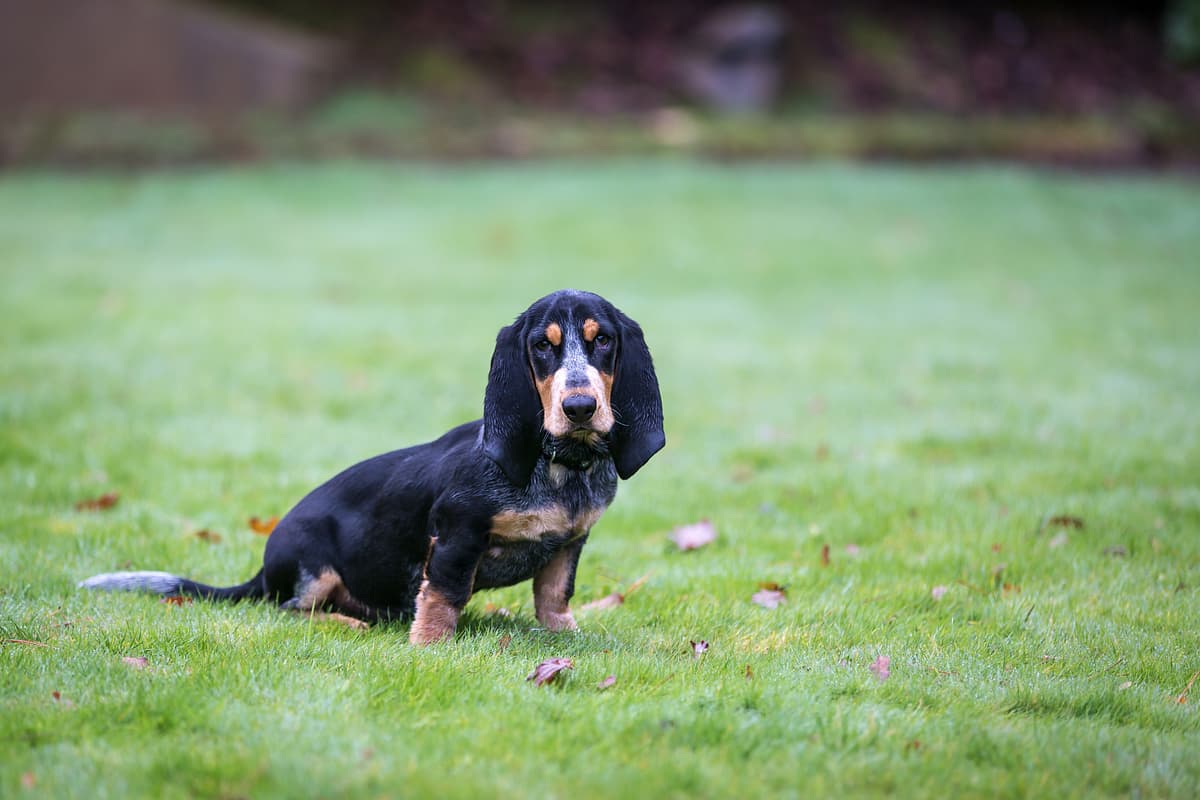Blue Gascony Basset vs Labrador Retriever
Discover the differences between Blue Gascony Basset and Labrador Retriever to make the best choice for your situation.
Try different breeds

Blue Gascony Basset
Calm, affectionate, and sociable, this breed stands out for its deep voice and soulful eyes. Blue Gascony Bassets make loyal companions with a gentle, steady presence.

Labrador Retriever
Eager, friendly, and intelligent, this breed loves being part of an active family. Their gentle nature and loyalty make them outstanding companions for all ages.
Quick comparison
Medium
16–18 kg
Short, dense
10–13 years
14–16 kg
Moderately active
Large
29–36 kg
Short double coat, water-resistant
10–12 years
25–32 kg
High energy
Personality & behavior
Compare the personality traits and behavioral characteristics of both breeds.
Blue Gascony Basset
Affectionate with family, generally sociable with others
Reasonably smart, responds well to consistent training
Moderate activity needs, enjoys regular exercise
Likes interactive play, but not overly excitable
Adjusts to new situations with some patience
Labrador Retriever
Warm and sociable with people and animals
Quick learner, responds well to training
High stamina, enjoys active pursuits daily
Loves games and interactive activities
Adjusts easily to new situations and environments
Care needs
Exercise, grooming, and daily care requirements
Blue Gascony Basset
Ear infections, intervertebral disc disease
Labrador Retriever
Hip dysplasia, elbow dysplasia
Suitability
How well each breed fits different living situations and families
Blue Gascony Basset
Moderately suitable
Needs patient, consistent training from inexperienced handlers
Not ideal
Needs space and regular outdoor exercise to stay content
Somewhat suitable
Enjoys moderate activity but not overly energetic or demanding
Good companion
Tolerant and gentle with children when properly socialized
Generally compatible
Usually gets along with other pets if socialized early
Prone to separation anxiety
Dislikes being left alone for extended periods and may become vocal
Labrador Retriever
Great choice
Patient and eager to please, Labradors are manageable for most first-time owners.
Not ideal
Labradors need space and exercise, so apartments can limit their activity needs.
Perfect fit
High energy and stamina make them excellent for active individuals or families.
Highly suitable
Gentle temperament and playful nature make them safe and loving with young children.
Very friendly
Generally sociable and get along well with other dogs and pets.
Prone to anxiety
Extended alone time can lead to boredom and destructive behaviors in this breed.
Breed strengths
What each breed excels at and their best qualities
Blue Gascony Basset
- Adaptable to various living environments
- Strong scent-tracking abilities
- Gentle and affectionate with families
- Generally good with other dogs
- Loyal and steady temperament
Labrador Retriever
- Friendly and sociable with people and dogs
- Highly trainable and eager to please
- Excellent with children and families
- Strong retrieving and swimming abilities
- Generally adaptable to various living situations
Challenges & considerations
Potential challenges and considerations for each breed
Blue Gascony Basset
- Prone to stubbornness during training
- Needs regular exercise to prevent boredom
- Can be vocal when left alone
- Requires thorough ear cleaning to prevent infections
- May chase small animals due to prey drive
Labrador Retriever
- Prone to obesity without portion control
- Can become destructive if under-exercised
- Heavy seasonal shedding requires regular grooming
- May develop hip or elbow dysplasia
- Needs significant daily physical activity
Ready to choose your perfect breed?
Learn more about each breed or compare other breeds to find the perfect match for your lifestyle.
Discover more helpful tools
Make use of our other free tools to get the most out of your pet experience
